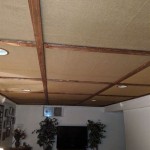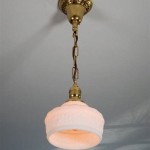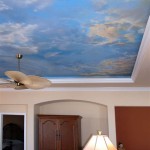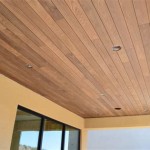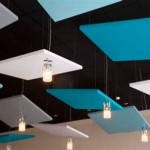Tray ceilings are one of the most common and versatile ceiling designs, offering a range of styles and designs to suit any home. Tray ceilings, also known as recessed ceilings, are created by raising the middle section of the ceiling, often creating a “tray” effect. Tray ceilings are a great way to add texture, depth, and detail to a room, and can be used to create a variety of different looks. In this guide, we will explore some of the creative and stylish tray ceiling designs available, as well as some tips and tricks for getting the most out of your tray ceiling.
Types of Tray Ceilings
Tray ceilings come in a variety of shapes and sizes, and can be used to create a range of different looks. Some of the most common types of tray ceilings include:
- Flat Tray Ceilings – Flat tray ceilings are the most basic and common type of tray ceilings. They are created by simply raising the middle section of the ceiling, creating a flat “tray” effect.
- Vaulted Tray Ceilings – Vaulted tray ceilings are similar to flat tray ceilings, but they are raised higher in the middle and often curved, creating a more dramatic look.
- Coffered Tray Ceilings – Coffered tray ceilings are created by dividing the ceiling into multiple sections, often with decorative moldings or trim. This type of ceiling is often used to create a grand, ornate look.
- Beamed Tray Ceilings – Beamed tray ceilings are created by adding wooden beams to the ceiling, often in a patterned design. This type of ceiling is great for adding a rustic, country look to a room.
Design Considerations for Tray Ceilings
When designing a tray ceiling, there are a few key factors to consider. First, it’s important to think about the desired effect. Tray ceilings can be used to create a range of different looks, from simple and subtle to grand and ornate. It’s also important to consider the size and shape of the room, as the size and shape of the tray ceiling should be proportionate to the room. Additionally, it’s important to think about lighting. Tray ceilings can be used to create a dramatic effect with lighting, and it’s important to consider the type of lighting that will be used.
Tips and Tricks for Installing Tray Ceilings
Installing a tray ceiling can be a tricky task, but there are a few tips and tricks that can help make the process easier. First, it’s important to plan ahead and measure the room carefully. This will help ensure that the size and shape of the tray ceiling is proportionate to the room. Additionally, it’s important to take into account any obstacles, such as windows and doors, that may be in the way. Finally, it’s important to use the correct materials and tools, as well as to get professional help if needed.
Conclusion
Tray ceilings are a great way to add texture, depth, and detail to a room, and can be used to create a variety of different looks. There are a variety of different types of tray ceilings available, from flat to coffered to beamed. When designing a tray ceiling, it’s important to consider the desired effect, the size and shape of the room, and lighting. Finally, when installing a tray ceiling, it’s important to plan ahead, measure carefully, and use the correct materials and tools. With these tips and tricks, you can create a stylish and creative tray ceiling that will bring added style and sophistication to your home.





-min.jpg)








Related Posts


